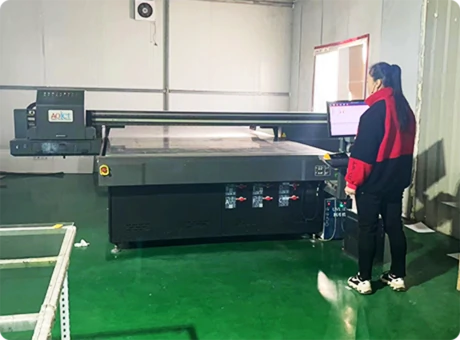Understanding the Cost of Float Glass
Float glass, a widely used material in the construction and automotive industries, is produced through a specialized process that results in a flat, smooth surface. This manufacturing technique involves floating molten glass on top of molten tin, allowing it to form a perfectly level sheet. While the quality of float glass is unmatched, understanding its cost factors is crucial for stakeholders, from manufacturers to end-users.
Factors Influencing the Cost of Float Glass
1. Raw Materials The primary ingredients for float glass production include silica sand, soda ash, and limestone. The prices of these raw materials can fluctuate due to supply chain issues, mining regulations, and transportation costs, directly impacting the overall cost of the finished glass product. For instance, a sudden spike in silica sand prices due to environmental regulations or scarcity can lead to increased production costs for manufacturers.
2. Manufacturing Process The float glass process requires specialized equipment and technology. The melting and floating of glass involve high-energy consumption, particularly in maintaining the temperature required for melting silica. Energy prices significantly affect manufacturing costs. As energy sources become more expensive or as industries shift to greener practices, these changes will also be reflected in float glass pricing.
3. Labor and Operational Costs The cost of labor plays a crucial role in determining the final price of float glass. Skilled workers are essential for ensuring the quality of the product, but labor costs can vary tremendously based on geographical location. Furthermore, businesses must account for operational expenses like maintenance and facility overhead, which can influence pricing strategies.
cost of float glass
4. Market Demand and Supply The supply and demand dynamics in the market can have a significant impact on float glass pricing. In times of heightened construction activity or economic booms, the demand for float glass can outpace supply, leading to price increases. Conversely, during economic downturns, reduced demand can cause prices to stabilize or drop. It's essential for manufacturers to monitor market trends to price their products competitively.
5. Transportation and Logistics The logistics of transporting float glass from manufacturing plants to distribution centers and ultimately to end-users can add a considerable amount to the overall cost. Float glass is heavy and fragile, requiring careful handling and specialized transportation. Rising fuel costs and logistical challenges can further exacerbate these expenses.
6. Innovations and Technology Advancements in manufacturing techniques can also influence the cost of float glass. For instance, innovations that improve energy efficiency or reduce waste during production can help manufacturers lower costs, which can be passed on to consumers. However, the initial investment in new technology can be substantial, and it is often a balancing act for companies operating in competitive markets.
Conclusion
In summary, the cost of float glass is determined by a multitude of factors, including raw material prices, manufacturing processes, labor costs, market dynamics, transportation logistics, and technological advancements. For stakeholders in the float glass supply chain, understanding these elements is vital for making informed decisions regarding procurement, pricing strategies, and investment in technology. As the industry continues to evolve, those who stay abreast of trends and challenges will be better positioned to navigate the complexities of the float glass market. Ultimately, while the cost of float glass may fluctuate, its importance in various applications—from windows and facades to vehicle safety—remains steadfast, ensuring its role as a crucial material in our daily lives.
 Afrikaans
Afrikaans  Albanian
Albanian  Amharic
Amharic  Arabic
Arabic  Armenian
Armenian  Azerbaijani
Azerbaijani  Basque
Basque  Belarusian
Belarusian  Bengali
Bengali  Bosnian
Bosnian  Bulgarian
Bulgarian  Catalan
Catalan  Cebuano
Cebuano  Corsican
Corsican  Croatian
Croatian  Czech
Czech  Danish
Danish  Dutch
Dutch  English
English  Esperanto
Esperanto  Estonian
Estonian  Finnish
Finnish  French
French  Frisian
Frisian  Galician
Galician  Georgian
Georgian  German
German  Greek
Greek  Gujarati
Gujarati  Haitian Creole
Haitian Creole  hausa
hausa  hawaiian
hawaiian  Hebrew
Hebrew  Hindi
Hindi  Miao
Miao  Hungarian
Hungarian  Icelandic
Icelandic  igbo
igbo  Indonesian
Indonesian  irish
irish  Italian
Italian  Japanese
Japanese  Javanese
Javanese  Kannada
Kannada  kazakh
kazakh  Khmer
Khmer  Rwandese
Rwandese  Korean
Korean  Kurdish
Kurdish  Kyrgyz
Kyrgyz  Lao
Lao  Latin
Latin  Latvian
Latvian  Lithuanian
Lithuanian  Luxembourgish
Luxembourgish  Macedonian
Macedonian  Malgashi
Malgashi  Malay
Malay  Malayalam
Malayalam  Maltese
Maltese  Maori
Maori  Marathi
Marathi  Mongolian
Mongolian  Myanmar
Myanmar  Nepali
Nepali  Norwegian
Norwegian  Norwegian
Norwegian  Occitan
Occitan  Pashto
Pashto  Persian
Persian  Polish
Polish  Portuguese
Portuguese  Punjabi
Punjabi  Romanian
Romanian  Russian
Russian  Samoan
Samoan  Scottish Gaelic
Scottish Gaelic  Serbian
Serbian  Sesotho
Sesotho  Shona
Shona  Sindhi
Sindhi  Sinhala
Sinhala  Slovak
Slovak  Slovenian
Slovenian  Somali
Somali  Spanish
Spanish  Sundanese
Sundanese  Swahili
Swahili  Swedish
Swedish  Tagalog
Tagalog  Tajik
Tajik  Tamil
Tamil  Tatar
Tatar  Telugu
Telugu  Thai
Thai  Turkish
Turkish  Turkmen
Turkmen  Ukrainian
Ukrainian  Urdu
Urdu  Uighur
Uighur  Uzbek
Uzbek  Vietnamese
Vietnamese  Welsh
Welsh  Bantu
Bantu  Yiddish
Yiddish  Yoruba
Yoruba  Zulu
Zulu 

